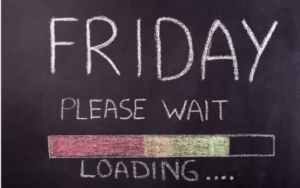Jobs threat as steel production buckles
By Matt Chambers, David Uren
The nation’s biggest steelmaker — and one of the fiercest critics of Labor’s proposed carbon tax — has put the future of its historic Australian operations under review in the face of the soaring dollar and weak demand.
BlueScope Steel, whose chairman, Graham Kraehe, says the Australian manufacturing industry is “under siege”, last night announced a $900 million writedown of its asset values and signalled a review of its “domestic steelmaking production capacity”.
It stressed that “no decisions have been made” but noted the “macro-economic challenges of a high Australian dollar, high raw material costs and low prices”.
BlueScope — the former BHP arm that employs about 5000 workers at its blast furnaces at Port Kembla in NSW and southeast of Melbourne — hinted at further writedowns and suggested that cutting production was the only chance to get back on a sustainable financial footing.
Last night’s statement made no mention of the Gillard government’s planned carbon tax. Mr Kraehe and chief executive Paul O’Malley were harsh critics of the proposal in the lead-up to the June announcement of the tax, saying it could destroy the industry, but news of a $300m steel industry compensation package, with a review after four years, appeared to have appeased the company.
The threat of job losses, coupled with BlueScope’s warnings about slow domestic demand, will increase concerns that the unemployment rate has bottomed.
Figures released yesterday revealed the jobless rate had risen for the first time this year, climbing above 5 per cent in every state except the resource boom heartland of Western Australia as a business slowdown starts taking its toll on full-time employment.
The national jobless rate rose from 4.9 per cent to 5.1 per cent last month, increasing concern about the health of the economy and adding to the pressure on the Reserve Bank to cut interest rates.
The figures represent the first rise in the jobless rate since October and follow difficult trading conditions in industries ranging from retail to tourism, construction and manufacturing, which has been hurt by the soaring dollar.
In March, Mr Kraehe launched a stinging attack on the carbon tax, saying it would worsen problems caused by a two-speed economy and destroy manufacturing.
“The economic consequences are huge,” Mr Kraehe said at the time. “Australian manufacturing is under siege by a combination of the two-speed economy and a short-term political desire to introduce a carbon tax.
“I fear they are prepared to sacrifice Australian manufacturing.”
Citigroup joint chief economist Josh Williamson said yesterday the small rise in unemployment on its own “wouldn’t be a concern for the central bank but it is coming at a time with a lot of global uncertainty and caution among both consumers and business”.
“The risk is that if people are getting more concerned about their employment prospects, that could exacerbate their caution and hurt the retail sector further,” he said.
Employment Minister Chris Evans said the rise in the number of unemployed should be kept in perspective.
“Australia’s unemployment rate remains one of the lowest rates in the industrialised world and stands in stark contrast to our peers,” he said.
He noted that the jobless rate in the US was double that of Australia’s and highlighted the 190,000 jobs generated in the past year, most of which had been full-time roles.
However, the Australian Bureau of Statistics has revised down the jobs growth figures from earlier months and it now appears just over 40,000 jobs have been generated in the first seven months of this year, an annual growth rate of only 0.6 per cent.
“If current rates of employment growth are maintained, then the unemployment rate could rise to around 5.6 per cent in six months’ time,” a report by ANZ economists Riki Polygenis and Ivan Colhoun said.
The collapse in employment growth has been most marked for the full-time positions and for men, which had been the main source of growth through last year.
Since November, there has been no growth in employment for men or in full-time positions for men or women.
In July, there were 22,100 new part-time positions created, however, this was entirely offset by a 22,200 fall in full-time positions.
Tony Abbott said the new weakness in the labour market underlined the dangers of introducing a new carbon tax.
“This is a very fragile international economic situation. It is the very worst time to be adding to the burdens of Australian business,” he said.
It was a sentiment echoed by the Australian Chamber of Commerce and Industry, which said there were emerging signs that falling demand along with both global and domestic uncertainty were starting to weaken the labour market.
The monthly ABS jobs reports can be volatile, with the possibility that the rise in the jobless rate could be reversed this month.
However, the ANZ note said that averaging the jobs figures over four months showed that the trend for employment growth had now turned negative for the first time since August 2009, when the economy was still suffering the after-effects of the global financial crisis.
The latest jobs numbers show a gulf is opening between the performance in Western Australia and the rest of the country.
Western Australia’s jobless rate dropped to 4 per cent, its lowest level since January 2009, when the global financial crisis was starting to push unemployment higher across the country.
However, in all other states the unemployment rate has risen over the past three or four months. It is highest in Queensland at 5.6 per cent, followed by South Australia at 5.3 per cent and NSW and Tasmania at 5.2 per cent. Victoria’s jobless rate jumped from 4.6 per cent to 5.1 per cent in July.
The Northern Territory, also enjoying the resources boom, has a jobless rate of 4.2 per cent.
UNEMPLOYMENT RATE
NSW … 5.2% ….. Steady
VIC …… 5.1% …. up 0.5pts
QLD …. 5.6% ….. up 0.4pts
SA …… 5.3% ….. up 0.2pts
WA ….. 4.0% ….. down 0.2pts
TAS ….. 5.2% …. down 0.3pts
NT ……. 4.2%* … up 0.3pts
ACT ….. 4.0%* … Steady
Seasonally adjusted *Trend
CHARTS:
“JULY JOBS FIGURES”
“DROP IN FULL-TIME JOBS”
Article from The Australian, August 12, 2011.


